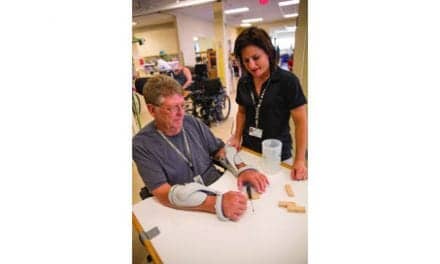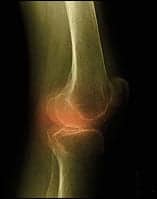Researchers have developed an intelligent system that relies on reinforcement learning to “tune” robotic prosthetics and allow patients to walk comfortably with them on a level surface in minutes, rather than the hours necessary if tuned by a clinical practitioner.
When a patient receives a prosthetic device, its parameters must be tuned to accommodate the patient who is wearing the device. This is usually done by a human clinical practitioner, and the process could take hours.
On the other hand, the new system tweaks 12 different control parameters, addressing prosthesis dynamics, such as joint stiffness, throughout the entire gait cycle.
It relies on a computer program that makes use of reinforcement learning to modify all 12 parameters, allowing patients to use a powered prosthetic knee to walk on a level surface in about 10 minutes, according to researchers from North Carolina State University (NC State), the University of North Carolina (UNC), and Arizona State University (ASU), in a media release.
“We begin by giving a patient a powered prosthetic knee with a randomly selected set of parameters,” says Helen Huang, professor in the Joint Department of Biomedical Engineering at NC State and UNC, and co-author of a study explaining the new system, which was published recently in IEEE Transactions on Cybernetics.
“We then have the patient begin walking, under controlled circumstances. Data on the device and the patient’s gait are collected via a suite of sensors in the device. A computer model adapts parameters on the device and compares the patient’s gait to the profile of a normal walking gait in real time”
“The model can tell which parameter settings improve performance and which settings impair performance. Using reinforcement learning, the computational model can quickly identify the set of parameters that allows the patient to walk normally,” she continues.
While the work is currently done in a controlled, clinical setting, one goal would be to develop a wireless version of the system, which would allow users to continue fine-tuning the powered prosthesis parameters when being used in real-world environments.
“This work was done for scenarios in which a patient is walking on a level surface, but in principle, we could also develop reinforcement learning controllers for situations such as ascending or descending stairs,” adds Jennie Si, co-author of the paper and a professor of electrical, computer and energy engineering at ASU, in the release.
Researchers hope to make the process even more efficient, Huang continues.
“For example,” she says, “we think we may be able to improve the process by identifying combinations of parameters that are more or less likely to succeed, and training the model to focus first on the most promising parameter settings.”
However, they note that, while this work is promising, many questions need to be addressed before it is available for widespread use.
“For example, the prosthesis tuning goal in this study is to meet normative knee motion in walking,” Huang comments. “We did not consider other gait performance (such as gait symmetry) or the user’s preference. For another example, our tuning method can be used to fine-tune the device outside of the clinics and labs to make the system adaptive over time with the user’s need. However, we need to ensure the safety in real-world use since errors in control might lead to stumbling and falls. Additional testing is needed to show safety.”
If the system does prove to be effective and enter widespread use, it would likely reduce costs for patients by limiting the need for patients to make clinical visits to work with practitioners, the team suggests, per the release.
[Source(s): North Carolina State University, Science Daily]
Intelligent System to 'Tune' Robotic Prosthetics Developed in Lab





